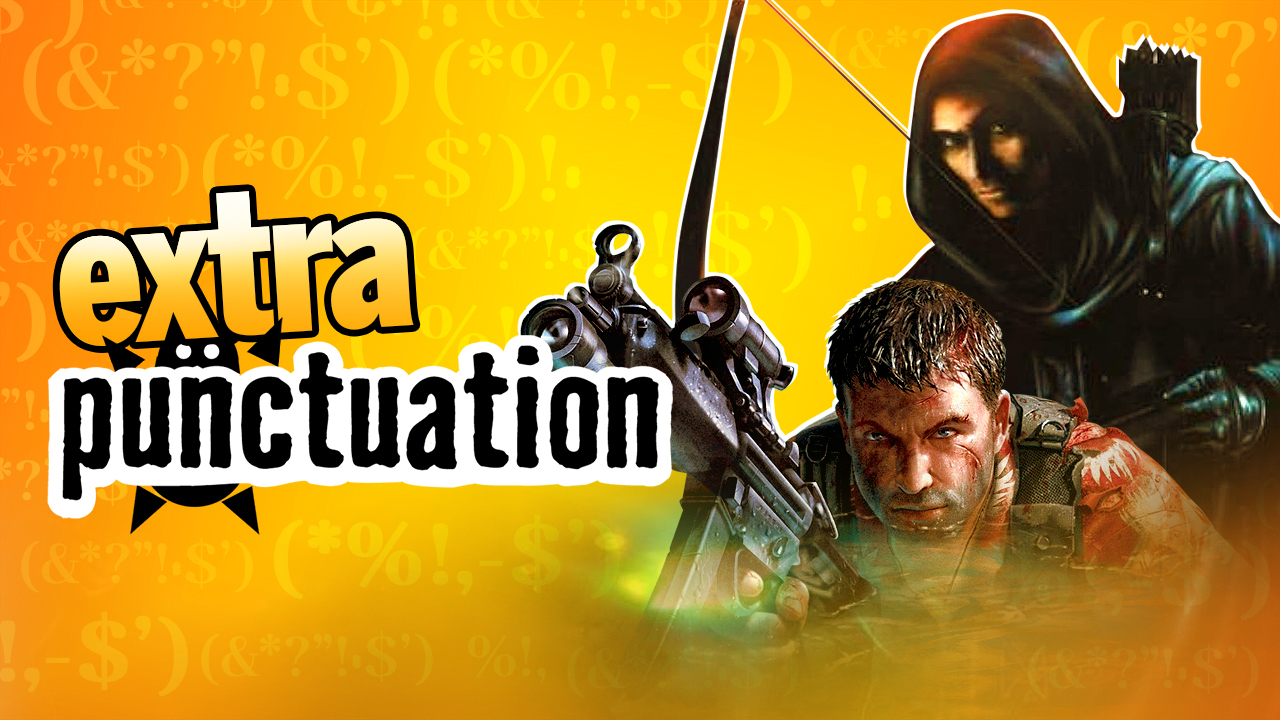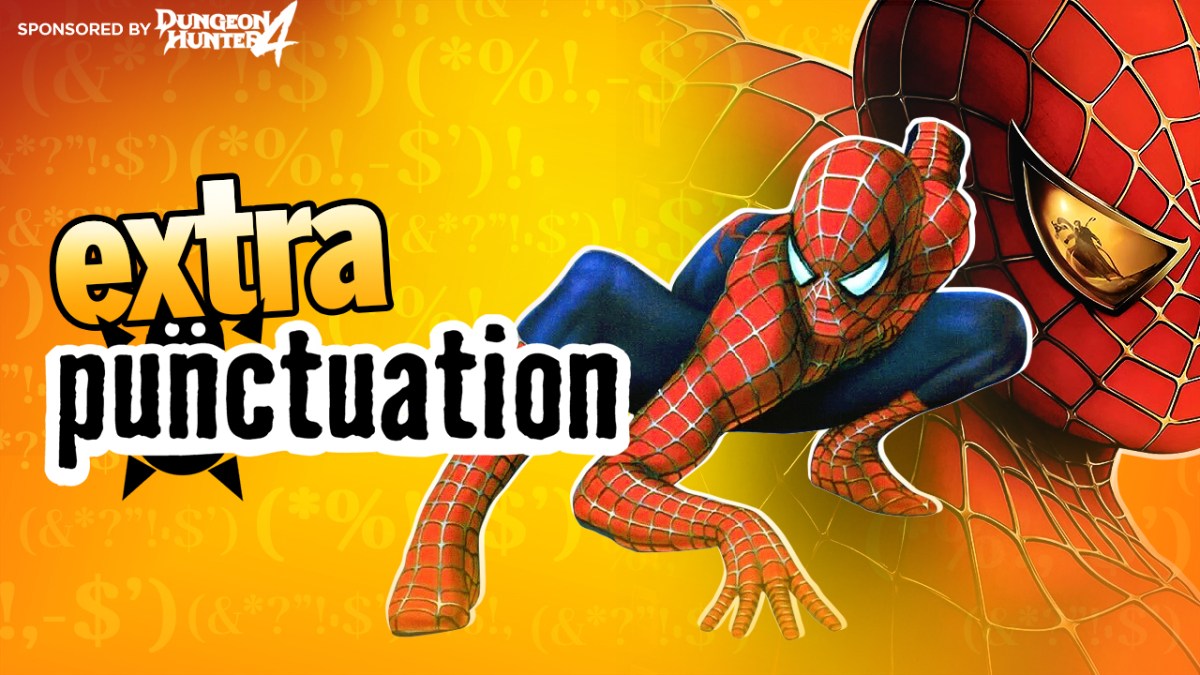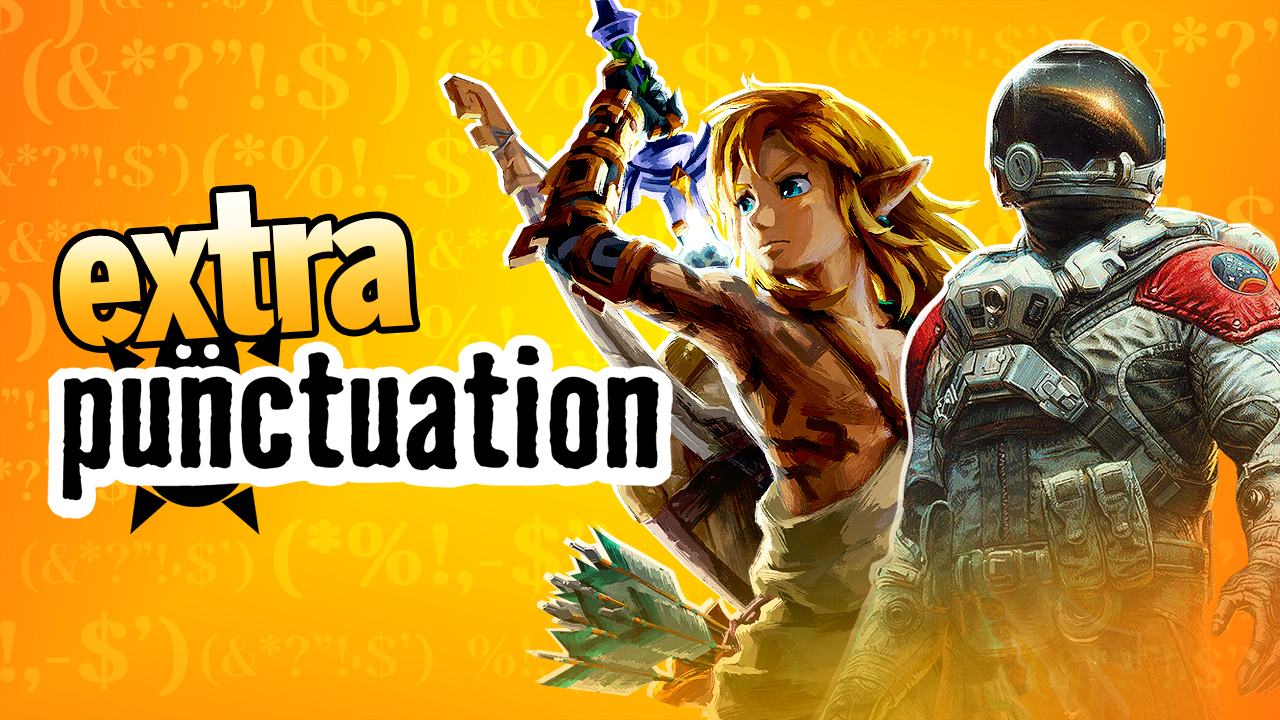
Lately, I’ve become obsessed with a new writing project. I love it when I get these obsessions that fire my imagination and churn my stomach with excitement, and so I’d like to use this column to share my enthusiasm. I’ve become fixated on the idea of a Grand Unifying Theory for video game stories, in the tradition of the Wold Newton family, or Alan Moore’s League of Extraordinary Gentlemen series. I’m probably not the first to have considered this, but this one is mine, and my academic interest in interactive storytelling has made it a very stimulating project.
It started when I considered that the one factor that unifies all video game worlds, and that does not exist in reality, is the technology to immediately heal injuries with no lasting effect. I then proposed the concept of a substance called ‘Red’, which has the ability to regenerate living tissue and, in greater concentrations, permanently mutate it. We’ll say that Red is an extremely common substance that is placed in all commercial first aid kits and frequently used as a food additive. This established, I started extrapolating, and found I could not stop.
The rejuvenate properties of Red was a secret kept throughout history by the Assassin order, who went into shipping during the Golden Age of Piracy when a large seam of Red was discovered to exist beneath the Atlantic Ocean, which had been affecting plant life and lending potency to the root beer distilled by pirate communities on nearby Caribbean islands. The same seam would later be exploited by the scientists of Rapture, who tragically underestimated the mutating effect that Red acquired after passing through the body chemistry of a sea slug. Red was first refined into a safe, universal healing compound in the 1960s by an unnamed German scientist, who was fighting as a mercenary in the Gravel Wars. He had access to Red because he was a former Assassin, as evidenced by his fondness for long, red-and-white clothing.

His research was routinely stolen by spies, such as Cate Archer and a woman known only as ‘Eva’, who sold the information to Europe and the Chinese, respectively, so that Red’s healing properties became worldwide common knowledge. The Umbrella Corporation’s attempt to replicate the healing formula resulted in a variant that left people in a state of living death, a substance that went on to cause numerous disasters in places like Raccoon City, Willamette, and the island of Banoi. More recently, the location of the Atlantic seam was also leaked worldwide, making the United States a target for invasion attempts by Russia, North Korea and the South American Federation.
That’s an example of the direction my increasingly complex notes have been taking. Some things have taken shape so obviously that I hardly had to think about it. Of course, Red’s healing properties make it so useful that most workplaces and facilities store it in large quantities. And of course it becomes explosively volatile when concentrated, requiring that barrels of the substance be colored a vibrant red, by law, so that everyone knows to handle them carefully. It’s also the law that these barrels cannot be stored in large amounts in one place, due to the risk of increased explosive yield, and so are usually scattered in small groups of barrels throughout most built-up environments.

Then I realized that Red must be a fossil fuel, derived from the long-decayed bodies of prehistoric dragons, demons and other supernatural beings. Such ‘magical creatures’ were once commonplace, coexisting with mankind with varying degrees of harmony. That was until the industrial revolution was sparked by the radical Mechanist order, spreading rapidly from its beginnings in Dunwall, a port city on the northwest coast of Albion. The subsequent decay of the natural world forced magical beings to scatter and go into hiding (some in isolated population centers like Greenvale, Bright Falls, and Silent Hill). There was, however, a major assault upon humanity by supernatural beings in 1999, which ended when their leaders, the vampires Kain and Demitri Maximoff, were killed by Julius Belmont. The defeated surviving minions were then exiled to Mars.
Let me assure you at this point that I’m not about to start writing fan fiction. Some of you may indeed be wondering why I’ve devoted so much thought to a concept that can’t be worked into anything commercial without committing a hundred million copyright violations. The only excuse I can offer is that I find it great fun to think about, as an intellectual exercise, and that, I would hope, should be enough.
So I set myself a couple of rules for elaborating the unified game world further. Firstly, I’ll assume that all ‘fantasy’ games are taking place on Earth in the distant past. Lordran, for example, was a kingdom that existed in eastern Europe long before known civilization. From here originated a species of ambulatory mushrooms, who fled Lordran and resettled in a new land near what we know as ancient Persia, a land they named the ‘Mushroom Kingdom’. Etc, etc, etc.
Secondly, I’m not going to worry about incorporating future, science fiction settings, because almost all of them involve Earth having been destroyed or decimated, and that can happen at any time. I’m more interested in the history that created a shared world in the present day.

Thirdly, only stories that are unique to video games can be combined into the grand unification theory; games adapted from existing properties are not allowed, and any crossover must be reinterpreted. For example, I mentioned a war against demons in 1999, which is part of the backstory of Castlevania: Aria of Sorrow. But we can’t mention Count Dracula, because he didn’t originate in video games. Kain and Demitri Maximoff did, so we can attribute all of Count Dracula’s actions in the Castlevania timeline to one or the other. Phew. And could Kain be the same entity as Cain, the First Vampire referenced in Vampire the Masquerade: Bloodlines? Why the fuck not?
Another example. Call of Cthulhu: Dark Corners of the Earth is based on concepts from Lovecraft’s Cthulhu mythos, which we can’t use. But the protagonist, Jack Walters, was an original character, making him fair game. Perhaps, in the unified world, it was not Innsmouth he visited, but Illsmouth, a town that would later be renamed Anchorhead. The fish-men that Walters battled were not Lovecraft’s Deep Ones but the Gillmen, beings that would eventually be wiped out by XCOM during the ‘Terror from the Deep’ crisis. And the ancient dark God that the Gillmen served was not Cthulhu, but Giygas, implying that the Shoggoth that Walters fought in the gold refinery was actually Master Belch. Furthermore, could Giygas be the same being as Lavos? Or Mantorok, the corpse god? And what is the connection between Master Belch and the creature known as the Great Mighty Poo?





Published: Sep 2, 2014 04:00 pm